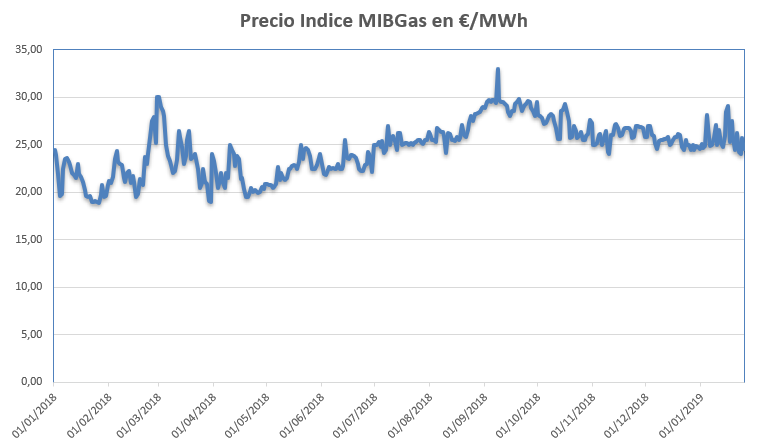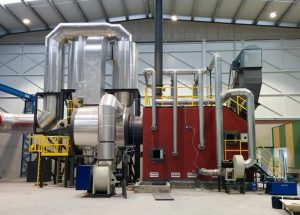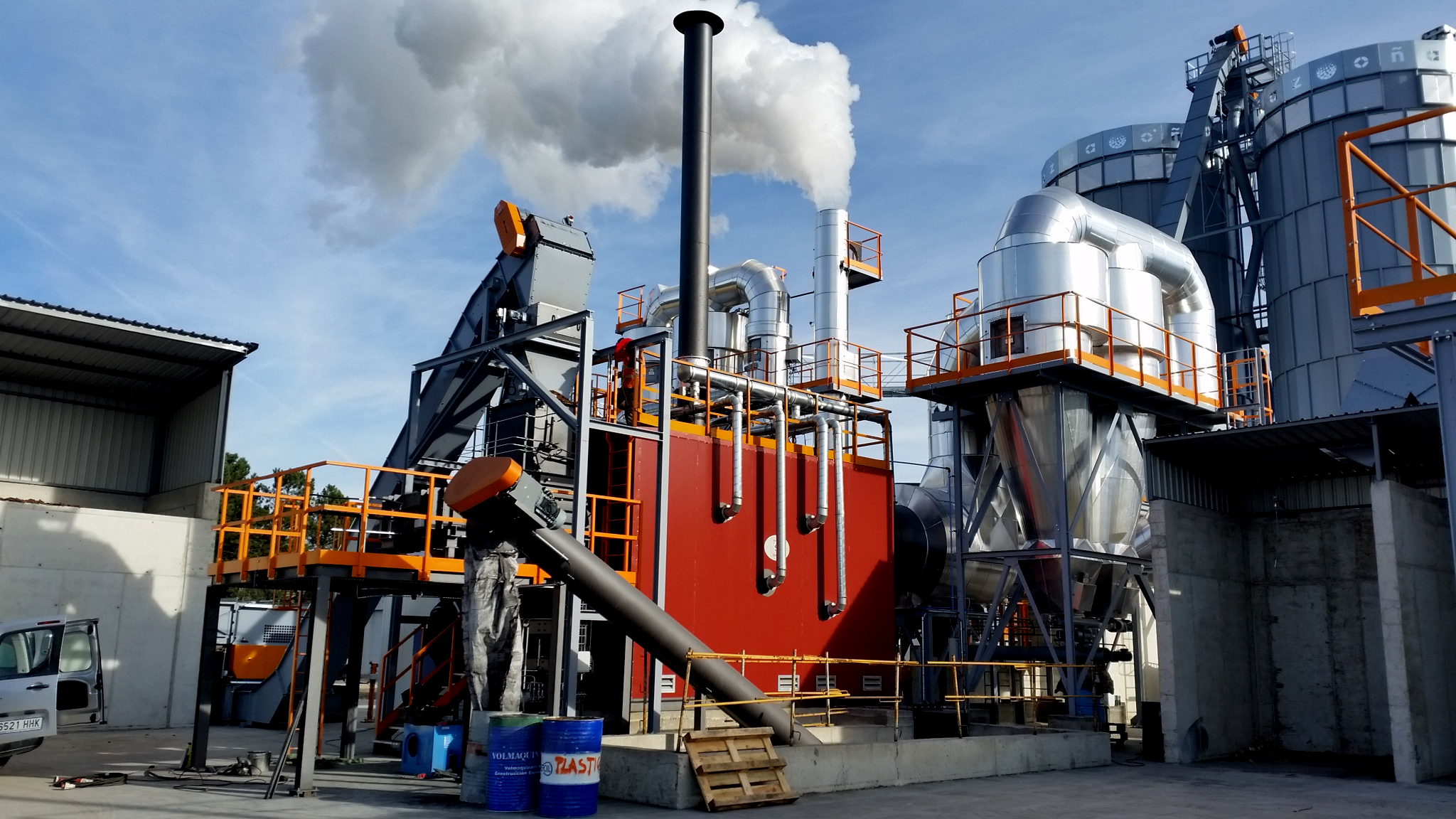Hot gas generatos for drying by means of biomass waste combustion are the reliable and economical alternative to Natural Gas.
The European Union’s 2030 Climate and Energy Framework envisages, among other objectives, the reduction of greenhouse gas emissions by up to 40% (compared to 1990).

This challenge will not be possible without the decarbonization of European industry.
At present, there are numerous industrial and agro-industrial processes that require the humidity reduction or drying in their products to facilitate their development and marketing.
- The production of pellets intended for heating requires a drying of the wood up to values around 10% to make it possible to manufacture.
- Similarly, dehydration of fodder or herbaceous crops for animal consumption such as alfalfa, cereal straw or silage corn requires a reduction in humidity of up to 12-14%.
In biomass waste flue gas drying plants, direct drying is usually carried out by means of a trommel or drum dryer, into which products such as wet sawdust, alfalfa or cereal straw are introduced.
Hot gases pass through the interior of the rotary dryer, evaporating the water and reducing the humidity of the product.
Hot gases are generated by combustion in industrial chambers or furnaces. There are two possible types of fuels: fossil fuels such as Natural Gas or biomass of different qualities.
At present, biomass combustion for flue gas generation for drying purposes is an economic, reliable and efficient alternative that benefits from numerous administrative grants and also from a price stability that fossil fuels (whose cost fluctuates up to 25% from one year to the next, making production costs more expensive) cannot boast of.

Biomass combustion chambers or furnaces for the generation of hot gases for drying have been developing for decades and are capable of handling a wide variety of fuels with high percentages of moisture and ash content and are capable of substituting natural gas as fuel.
Straw pellets, almond shells, vine pruning, pomace, tree bark and other wood wastes are just some of the fuels that combustion chambers can burn and whose prices are sometimes symbolic, if not a by-product of the user himself.

Recently, other alternative fuels such as SRF (solid recovered fuel) or RDF (refused derived fuel) are beginning to be considered.
The range of combustion chambers for biomass varies from the most economical, underfeed stoker type, to the advanced, step or reciprocating grate, with a high level of automation including continuous automatic ash cleaning, artificial vision applied to combustion, automatic feeding and online remote monitoring.
These features mean that human interaction with the machine is reduced to a minimum and, therefore, the number of staff in charge of its operation in each shift is reduced.
When selecting the equipment, it is important to take into account factors such as the type of fuel, its humidity, granulometry and the expected operating hours in order to make the most of the combustion gases.
Therefore, biomass waste fueled incinerators are now a reliable and economical alternative that saves production costs, and whose investment can be amortized in periods of around 3 years.
Alex Mas
Business Development Director

